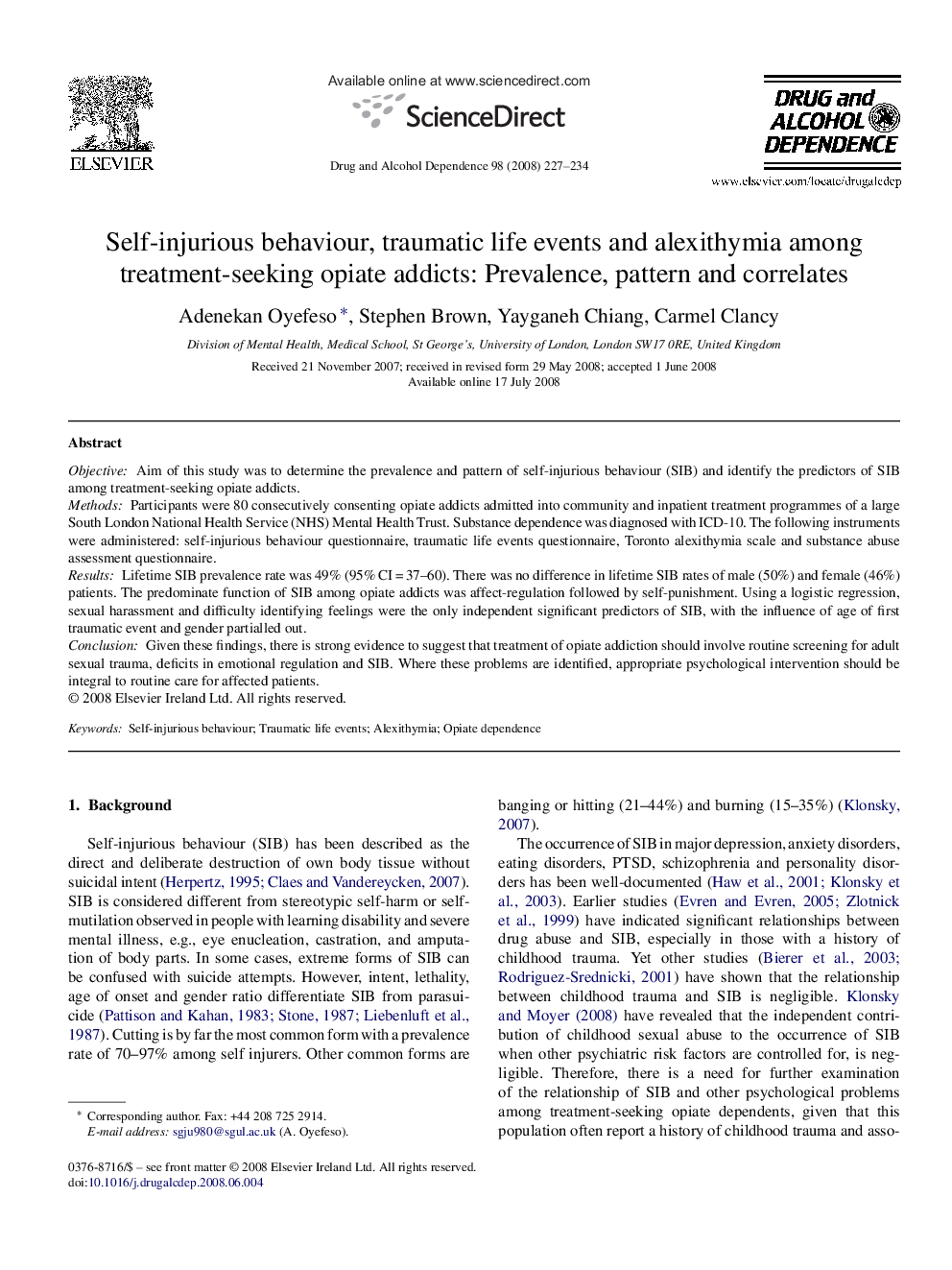| کد مقاله | کد نشریه | سال انتشار | مقاله انگلیسی | نسخه تمام متن |
|---|---|---|---|---|
| 1070919 | 949377 | 2008 | 8 صفحه PDF | دانلود رایگان |

ObjectiveAim of this study was to determine the prevalence and pattern of self-injurious behaviour (SIB) and identify the predictors of SIB among treatment-seeking opiate addicts.MethodsParticipants were 80 consecutively consenting opiate addicts admitted into community and inpatient treatment programmes of a large South London National Health Service (NHS) Mental Health Trust. Substance dependence was diagnosed with ICD-10. The following instruments were administered: self-injurious behaviour questionnaire, traumatic life events questionnaire, Toronto alexithymia scale and substance abuse assessment questionnaire.ResultsLifetime SIB prevalence rate was 49% (95% CI = 37–60). There was no difference in lifetime SIB rates of male (50%) and female (46%) patients. The predominate function of SIB among opiate addicts was affect-regulation followed by self-punishment. Using a logistic regression, sexual harassment and difficulty identifying feelings were the only independent significant predictors of SIB, with the influence of age of first traumatic event and gender partialled out.ConclusionGiven these findings, there is strong evidence to suggest that treatment of opiate addiction should involve routine screening for adult sexual trauma, deficits in emotional regulation and SIB. Where these problems are identified, appropriate psychological intervention should be integral to routine care for affected patients.
Journal: Drug and Alcohol Dependence - Volume 98, Issue 3, 1 December 2008, Pages 227–234